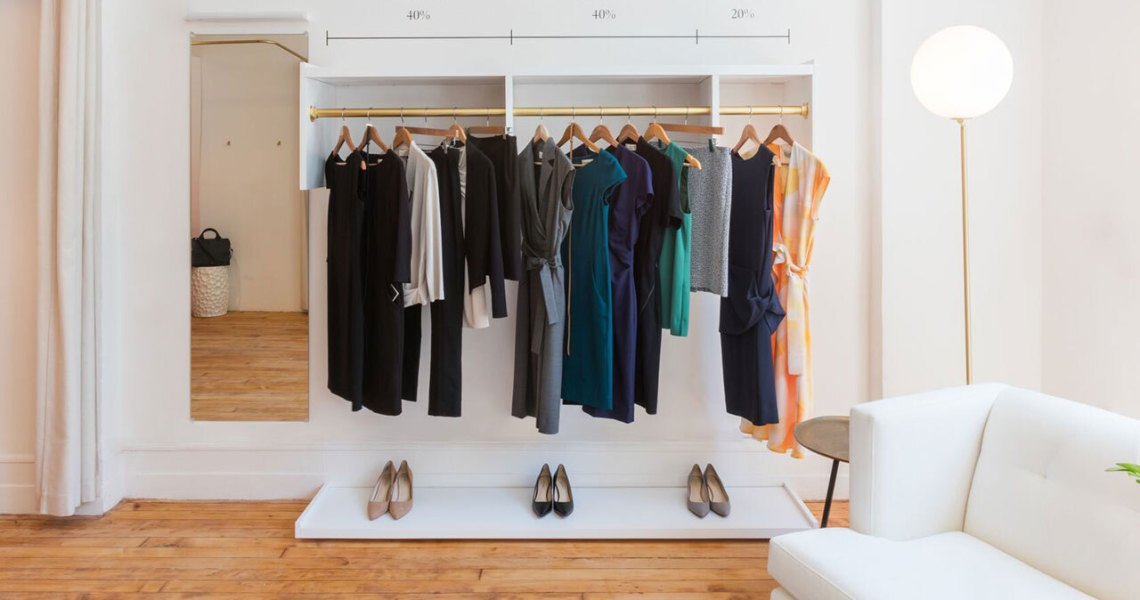A lot has changed for Sarah LaFleur, co-founder of women’s workwear brand M.M.LaFleur, since the pandemic began. She’s been working from home, she became a new mother to three children (one via IVF and two via surrogate, as she told Marie Claire), and her style and size have changed. Now, like many, she’s building an entirely new wardrobe to match her new, post-pandemic life.
“My style has definitely relaxed more, compared to pre-Covid,” she said. “I’m now two sizes above where I was pre-pregnancy. Initially, I thought I would snap back to my original size and continued to squeeze myself into my pre-pregnancy clothes. I was absolutely miserable. There’s nothing like having to unzip your pants midway through a meeting that makes you feel defeated.”
LaFleur isn’t alone in this. On Monday, Levi’s CEO Chip Bergh told the Associated Press that more than 25% of Levi’s customers are wearing a different size than they did a year ago. And consumers are considering new wardrobes to match their new lifestyles: According to Kontoor, the parent company of denim brands Wrangler and Lee, 84% of office workers plan to revamp their wardrobes to include more “business casual styles” this year, while spending an average of $445 to do so.
After more than a year of being cooped up inside, there’s finally a reason to dress up again. But people — their bodies and priorities — have changed. So what does style look like in a post-pandemic world?
In talking to insiders in the fashion industry about what consumers are interested in buying and wearing now, two themes emerged: comfort and versatility. Erik Fagerlind, creative director at Sneakersnstuff, said comfortable clothing has been a priority among his consumers.
“We saw a huge upswing in comfortable fashion like sweatpants and sandals when the pandemic was at its peak, and [now] we’re seeing a clear trend of being creative and expressive,” Fagerlind said. “As a brand, you need to stay on top of, or even in front of, these trends.”
Data from payment service Klarna shows that 49% of its users plan to dress more comfortably if they go back to work. Sales of comfort workwear were higher in May than at the beginning of 2021. And Klarna data shows sales of linen dresses grew by 789% in the last year. Sales of linen pants increased by 759%.
Ad position: web_incontent_pos1
“After more than a year of working from home and commuting to the couch in more casual styles, it’s no surprise that people aren’t ready to go back to more constrictive clothing,” said David Sykes, Klarna’s head of U.S. “For women, that might mean linen or jersey dresses, while men are opting for oversized shirts, more relaxed blazers and linen pants. Professional attire isn’t dead; it’s getting a more comfortable makeover.”
LaFleur said stretchy knitwear has grown to be a much bigger category for the brand, making up 26% of its sales in 2021, compared to 16% of sales last year. The brand only launched soft Pima cotton T-shirts in April 2020 and they already make up 16% of total sales.
“Many are preparing to re-enter the office, and when that act alone can stir anxiety, it’s great to have clothes that fit and make you feel comfortable in your own skin,” LaFleur said.
Analysts from both Klarna and NPD say that versatile products that can easily be worn to work and in more casual settings will become big sellers. This includes products that are typically thought of as dressier, like blazers and dress pants, but redesigned with more comfort-focused fabrics. Klarna data shows sales of jersey dresses grew by 128% and stretch blazers by 125% in the last year.
“Brands have been anticipating the return-to-work migration for the past several months and are mindful of the shifts people have made, in terms of their personal style throughout the pandemic,” Sykes said. “As consumers are leaving the house again, our research shows that they’re not ready to give up the comforts of home. For many brands, this means taking very casual items, like T-shirts and sandals, and redesigning them to add a little ready-for-work flair that allows consumers to look professional without sacrificing comfort.”
Ad position: web_incontent_pos2
Kristen Classi-Zummo, director of market insights in apparel at NPD, said the move toward versatility is due to the hybrid path many people’s work and personal lives are taking.
“According to our research, as much of a third of people will be working a hybrid at-home and in-office schedule,” Classi-Zummo said. “It won’t be like you wear sweatpants one day and a three-piece suit the next. It will be all about a blended wardrobe that can work all the time.”




